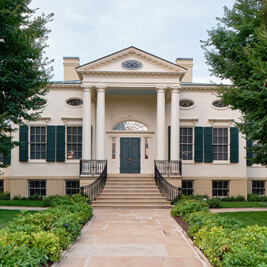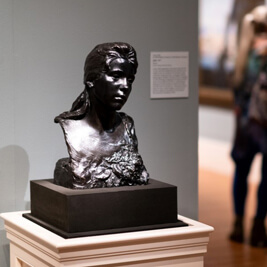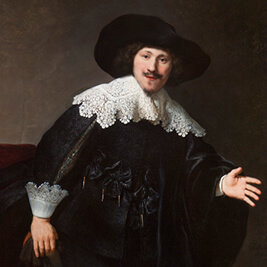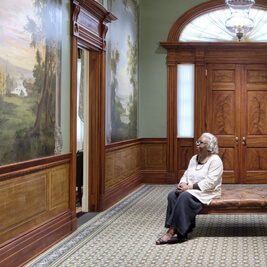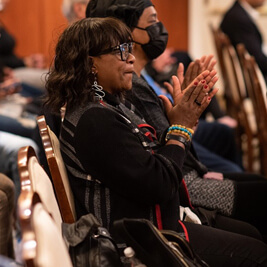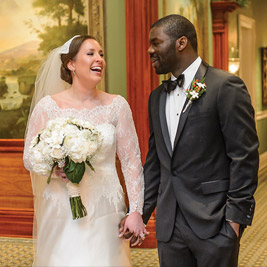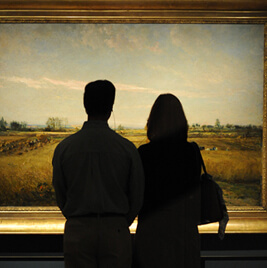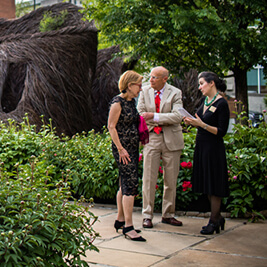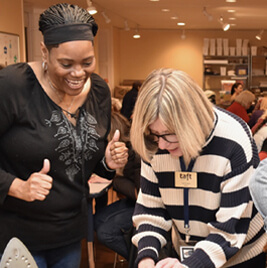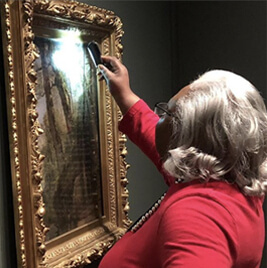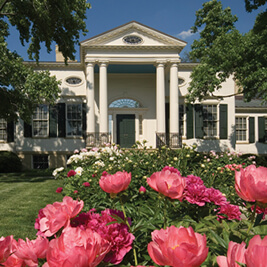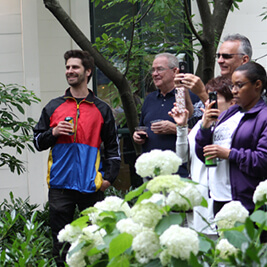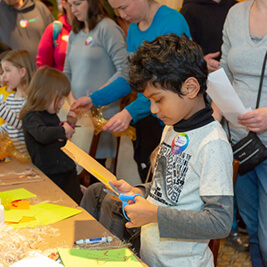- Do + See
- Dine + Host
- Give + Join
- Educate + Learn
Limoges Meets Beijing
By Angela Fuller, Assistant Registrar/Curatorial Assistant
In 2014, the Taft Museum of Art accepted a remarkable gift of 89 pieces of Chinese painted enamel copperware. The late Reverend Compton Allyn left these rare treasures to the Museum in his will. Made by painting colorful diluted glass paste onto copper forms, the enamels in Reverend Allyn’s collection illuminate a story of cultural exchange between East and West.
In one example of this exchange, an egg-shaped box is decorated with a European couple sipping tea outdoors (fig. 1). The Chinese enameller who decorated this box emphasized the couple’s reddish hair and exotic costumes—such as the man’s tri-cornered hat and the woman’s low-cut neckline—to accentuate their foreign status. High European demand for Chinese tea, porcelain, and silks led to a profitable maritime trade between East and West during the 17th and 18th centuries.
Along with goods for trade, Europeans brought many objects to China as tribute for the emperor and members of the Beijing court. In 1687, Jesuit missionaries sent by Louis XIV of France (1638–1715) presented a gift of enamels made in Limoges, where the painted enamel technique had been perfected about two hundred years earlier, to Xuanye, the Kangxi Emperor (1654–1722). Called yang ci, meaning “foreign porcelain,” the painted enamels resembled Chinese porcelains but were formed of copper. The emperor was so intrigued by the painted enamels that he set up workshops for the Jesuits to teach the technique to Chinese artisans.
At the beginning of the 18th century, Chinese artisans were already familiar with champlevé and cloisonné enamel techniques, which had arrived in China through the Middle East. They had also become highly proficient in using enamel paints to decorate porcelain. However, it was difficult to translate these skills into painted enamel. Covering a large area of smooth copper with painted enamel is difficult. Copper and enamel expand at different rates during firing, which can cause the enamel surface to change color, warp, or crack, and using many different colors required multiple firings. By the 1720s, however, Chinese artisans had mastered the technique.
Around the same time, European influence led to the development of a new enamel color palette in China, used for both porcelain and painted enamel on copper, now called famille rose (pink family) because of its popular pink and red tones. These colors could be blended with white enamel to produce a wide range of vibrant pastel colors not previously available in China, such as the pinks, blues, and yellows in fig. 1.
Charles and Anna Taft themselves purchased a Chinese painted enamel on copper, a basin (fig. 2), which also utilizes these bright colors. At its center, the Queen Mother of the West, encircled by clouds and riding a phoenix, appears as a vision to an official wearing pink robes. Around the border of the basin, flowers and fruit including pomegranates, peonies, and peaches express wishes for happiness, abundance, and long life.
The Tafts’ collection includes approximately one hundred French enamels and two hundred Chinese porcelains, two kinds of art beloved by Charles and Anna. The Reverend Compton Allyn’s generous gift neatly spans East and West and meaningfully strengthens the Museum’s decorative arts collection.
TYPES OF ENAMEL
The painted enamel technique arose from medieval methods of enamel decoration called cloisonné and champlevé. Cloisonné enamel (a) is made by adhering thin strips of metal wire to a copper or gold surface to form divided sections. The enameller then fills these outlined cells with glass paste in different colors. For champlevé (b), the enameller applies glass paste in areas where he or she has first carved out a design. The painted enamel technique (c) allows an enameller to apply glass paste to a smooth metal surface like paint on a canvas. Opaque white enamel can be layered with darker colors to achieve realistic volume and shading effects.
